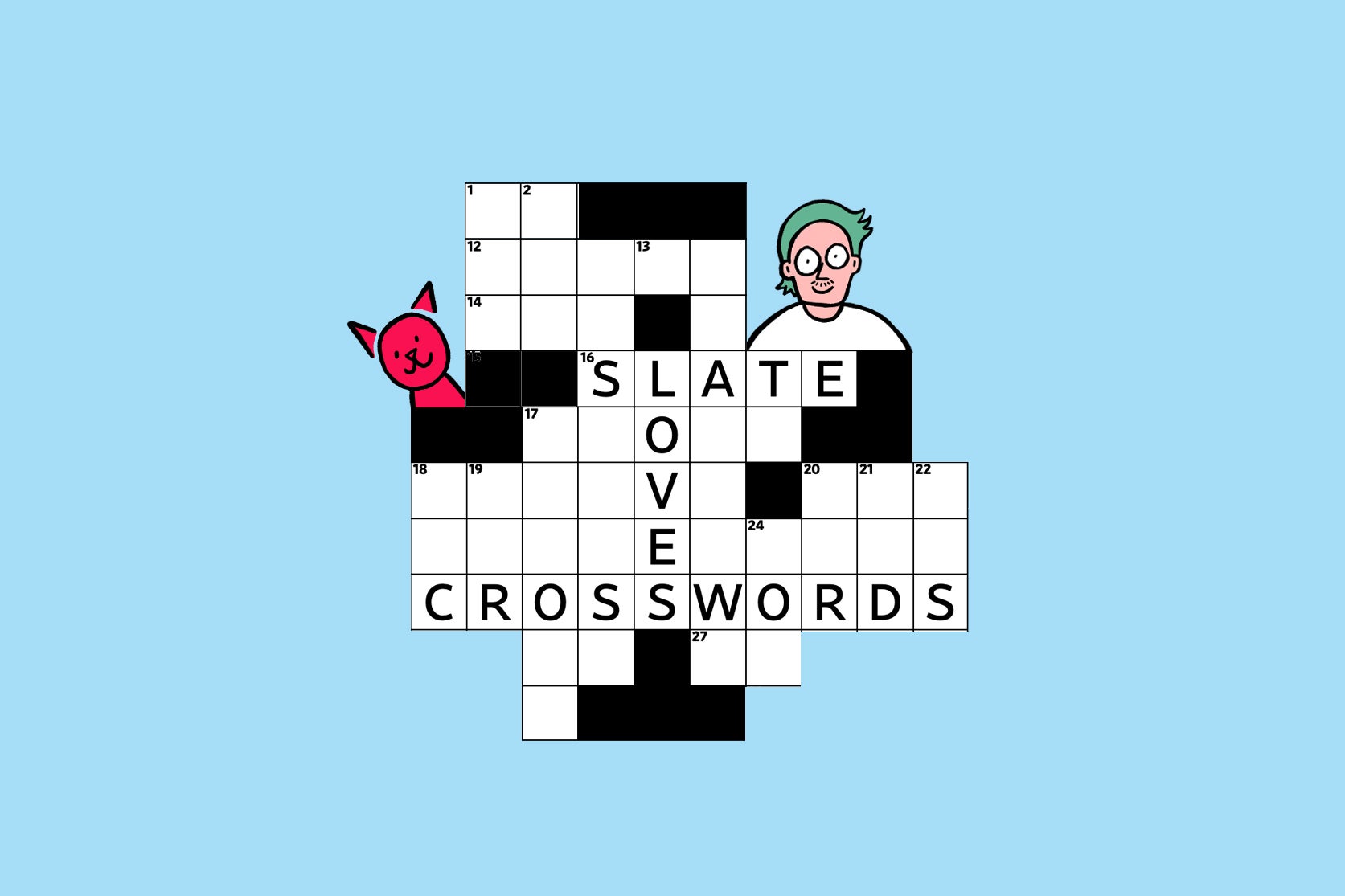And the Winner Is …
Slate’s crossword editor explains her homage to the most famous grid of all time.

I’ll admit it: election coverage? Not really my thing. Personally, I am on Team Nice, Hard Shovel Whack. That’s why I’m thrilled to announce that today’s Slate crossword has done the impossible. It has seen into the future and determined with 100 percent accuracy the name of our 47th president.
Yes! It’s true! Go ahead and see for yourself! I’ll give you a moment to solve the puzzle, while I slowly drink from a coffee mug filled with pollsters’ tears.
(Spoilers below.)
OK, OK, I’ll admit it—the puzzle is hedging its bets. You’ll note that four of the clues in this grid are just vague enough that they have two valid answers that differ by one letter. For instance, both a LEAK and a LEAD are accurately described by the clue [One might help a journalist break a big story]. The end result of this strategic vagueness is that whether you plunked DONALD or KAMALA in the middle of the grid, your answer is valid.
Devoted solvers of the Slate crossword will note that a similar gimmick was used in our Sept. 24 puzzle (a West Wing tribute which purported to have the “right” spelling of Muammar [G/Q]addafi’s name), as well as the July 19 puzzle (a game where you might “check with queens” can be solved as either CHESS or POKER). Crossword constructors call grids like these “Schrödinger puzzles,” and today’s Slate crossword is part of a long lineage of not just Schrödinger puzzles, but Schrödinger puzzles that purport to call the presidential race.
The story begins in 1980 with a man named Jeremiah Farrell. Farrell was a math professor at Butler University who constructed crosswords on the side, and he had just made a doozy of a grid. Clued as the winner of that year’s election, 1-Across could be either CARTER or REAGAN. He submitted the puzzle to the New York Times, where it was rejected by then-editor Eugene Maleska (who apparently really thought that John Anderson, the RFK Jr. of the the 1980 race, had a shot at the presidency). Farrell then sent his puzzle to Games Magazine, where it caught the eye of a young associate editor named Will Shortz. Shortz loved the grid, but he had received it too late; Farrell’s CARTER/REAGAN grid was dead.
Sixteen years later, Farrell retooled his concept, crafting another presidential Schrödinger puzzle that cemented his name in cruciverbal history. On Election Day 1996, the New York Times crossword made national news when a clue claimed to predict the [Lead story in tomorrow’s newspaper (!)]. This was, as you can surmise, a diabolical ruse. Farrell (with an assist from Shortz, who had by then taken the reins as the Times’ puzzle editor) had written a puzzle where the middle of the grid could read both BOB DOLE ELECTED and CLINTON ELECTED. Among the solvers vexed by this puzzle were Dole and Clinton themselves, as they recounted in the 2006 documentary Wordplay.
Farrell’s Election Day ’96 puzzle is, by pretty much any standard, the most famous individual crossword puzzle of all time (as well as Shortz’s personal favorite!). As such, it’s inspired its share of tributes and parodies. The funniest of these, in my estimation, is the puzzle my AVCX colleague Francis Heaney made for Election Day 2016, which takes Farrell’s grid layout and repurposes it for a Schrödinger puzzle about a different Clinton eyeing the White House. Today’s Slate crossword is more of a loose homage to Farrell than a parody, but I did make some attempt to mimic his puzzle’s layout, with its grid-spanning entries at the puzzle’s top and bottom. (I also threw in a little Easter egg for our eagle-eyed solvers—did you spot it?)
The Schrödinger puzzle is a versatile format, and every couple years a grid with a similar conceit goes viral. In 2016, Ben Tausig made headlines with a GENDERFLUID grid in which squares could be filled with either an “M” or an “F”; a 2022 Sunday Times puzzle by Steve McCarthy politely trolled sci-fi fans when it weighed in on whether STAR TREK was better than STAR WARS.
Puzzles like this are tricky to pull off, and I find myself awed by the handful of constructors who are able to make it look effortless. I don’t have a crystal ball, and I don’t actually know who our next president will be. But I feel confident predicting that this won’t be the last time the Slate crossword runs a grid like this.
Discover more from CaveNews Times
Subscribe to get the latest posts sent to your email.


























![Exploring the Serene Beauty of Nature: A Reflection on [YouTube video title]](https://cavemangardens.art/storage/2024/04/114803-exploring-the-serene-beauty-of-nature-a-reflection-on-youtube-video-title-360x180.jpg)


























